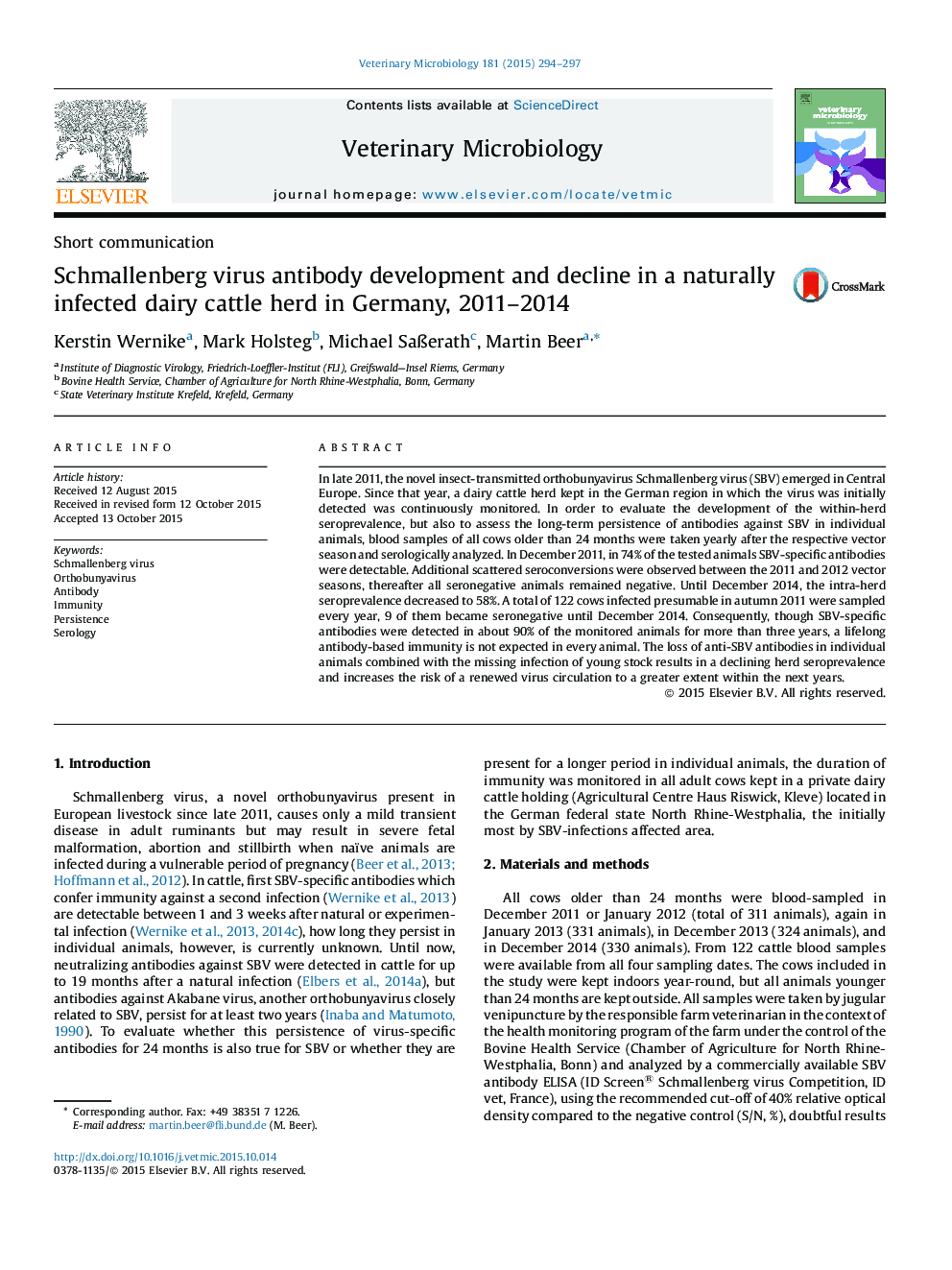| کد مقاله | کد نشریه | سال انتشار | مقاله انگلیسی | نسخه تمام متن |
|---|---|---|---|---|
| 5799847 | 1555342 | 2015 | 4 صفحه PDF | دانلود رایگان |

- The dynamics of anti-SBV antibodies was monitored in a German dairy cattle herd.
- A large number of cattle was infected in 2011, a few additional cows seroconverted in 2012.
- Only 10% of cows infected in 2011 became seronegative within 3 years.
- The within-herd seroprevalence declined from 74% to 58% between 2011 and 2014.
In late 2011, the novel insect-transmitted orthobunyavirus Schmallenberg virus (SBV) emerged in Central Europe. Since that year, a dairy cattle herd kept in the German region in which the virus was initially detected was continuously monitored. In order to evaluate the development of the within-herd seroprevalence, but also to assess the long-term persistence of antibodies against SBV in individual animals, blood samples of all cows older than 24 months were taken yearly after the respective vector season and serologically analyzed. In December 2011, in 74% of the tested animals SBV-specific antibodies were detectable. Additional scattered seroconversions were observed between the 2011 and 2012 vector seasons, thereafter all seronegative animals remained negative. Until December 2014, the intra-herd seroprevalence decreased to 58%. A total of 122 cows infected presumable in autumn 2011 were sampled every year, 9 of them became seronegative until December 2014. Consequently, though SBV-specific antibodies were detected in about 90% of the monitored animals for more than three years, a lifelong antibody-based immunity is not expected in every animal. The loss of anti-SBV antibodies in individual animals combined with the missing infection of young stock results in a declining herd seroprevalence and increases the risk of a renewed virus circulation to a greater extent within the next years.
Journal: Veterinary Microbiology - Volume 181, Issues 3â4, 31 December 2015, Pages 294-297